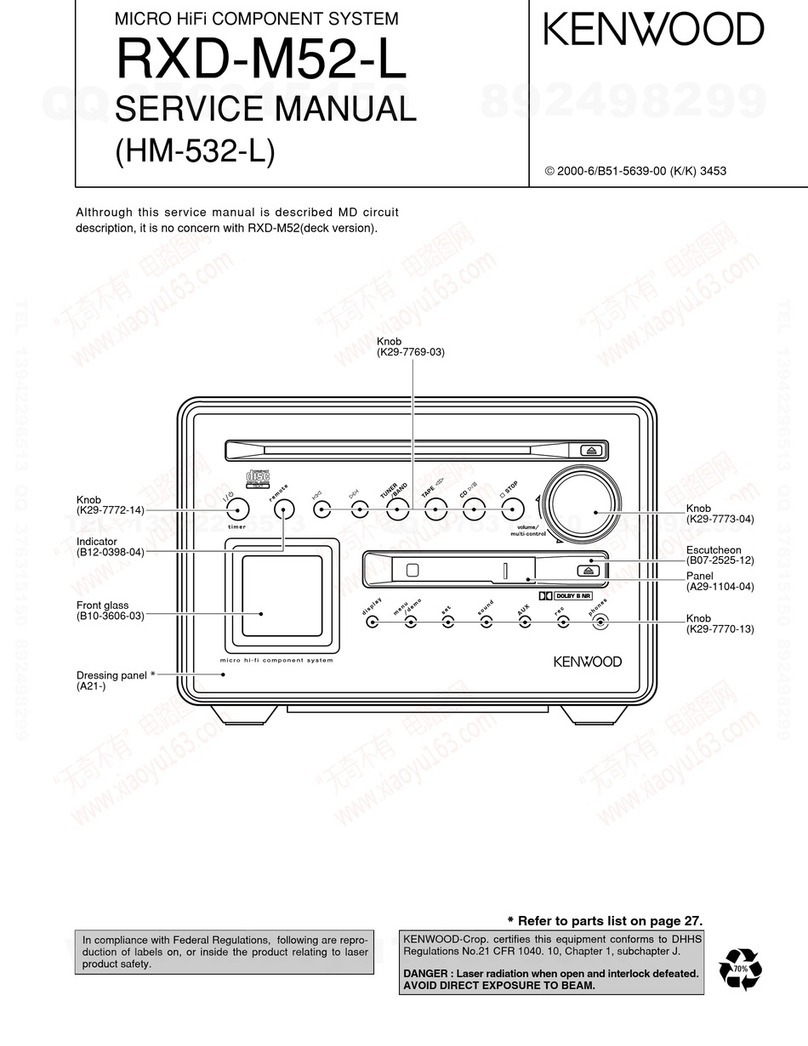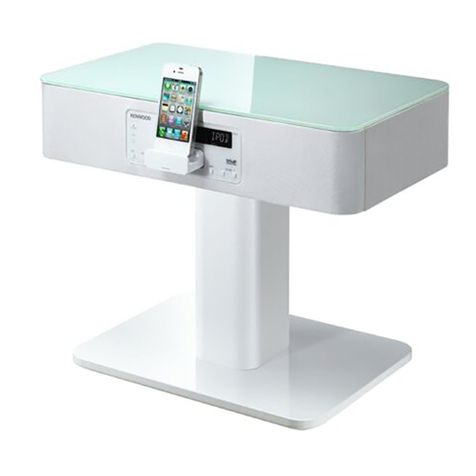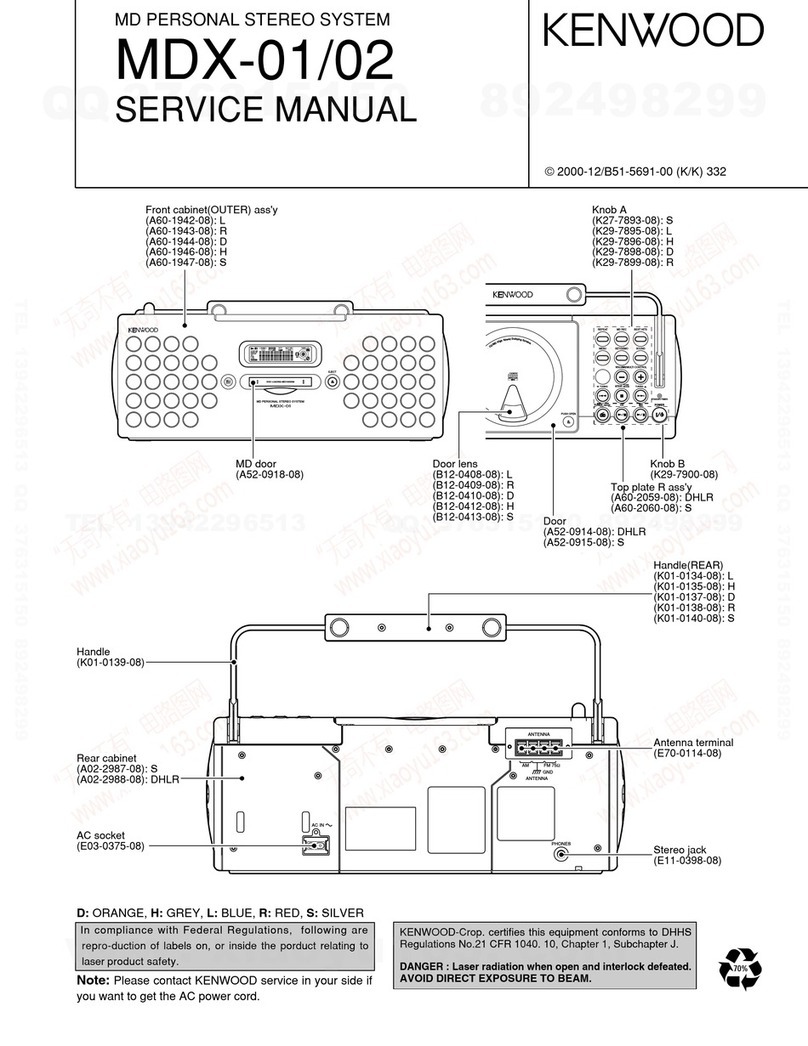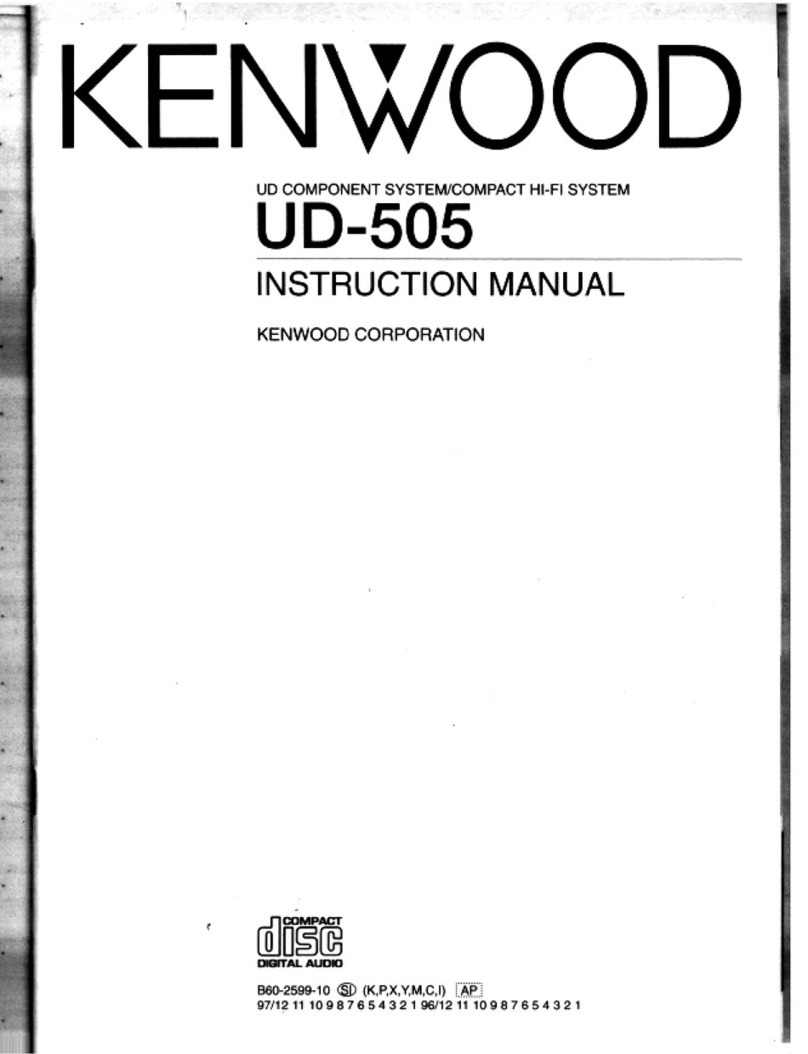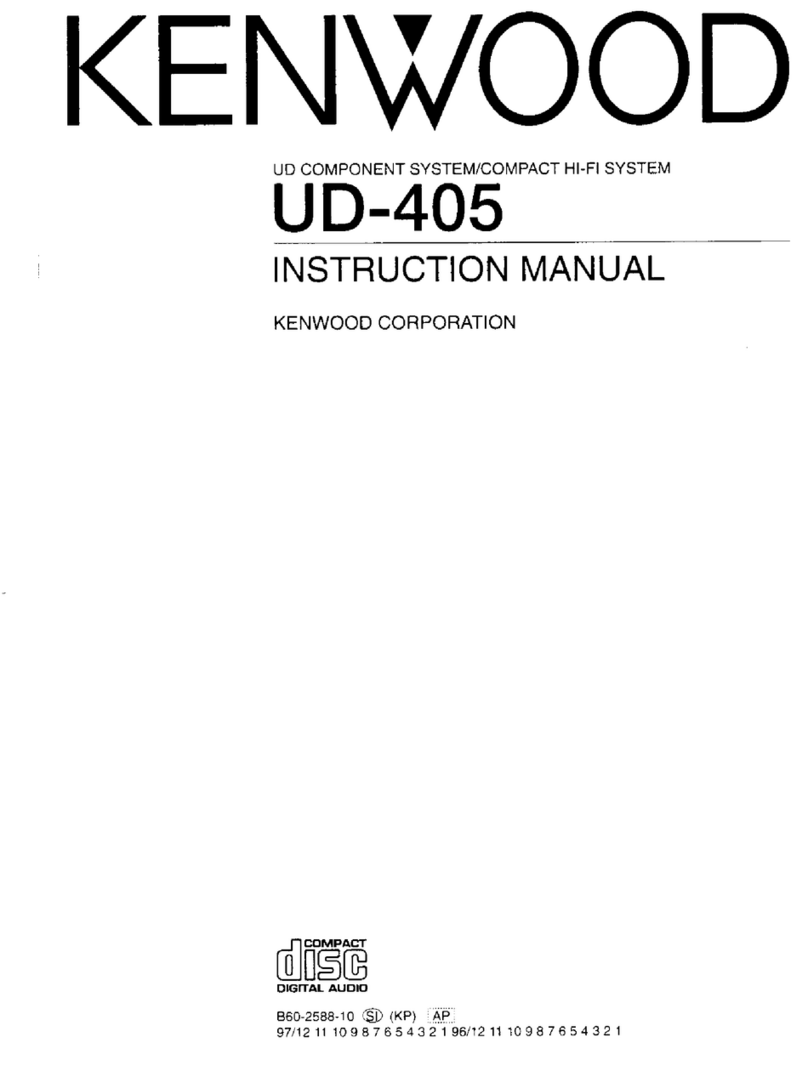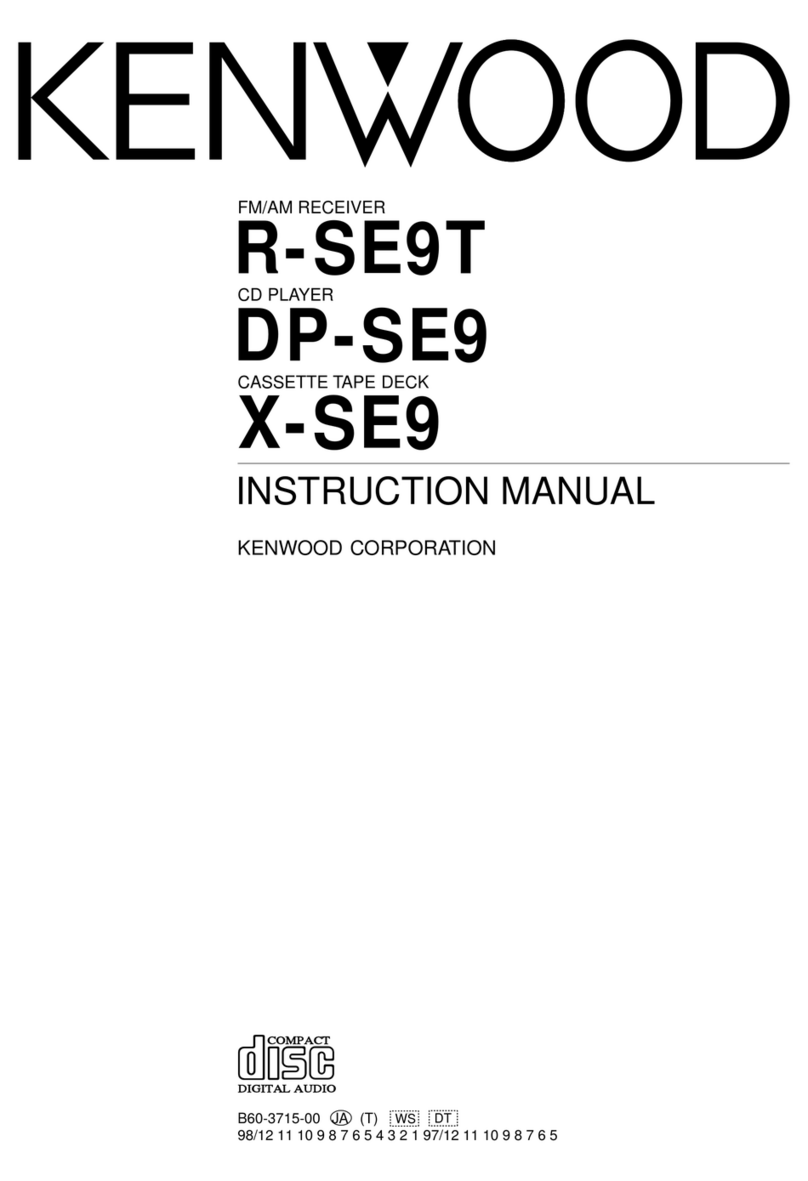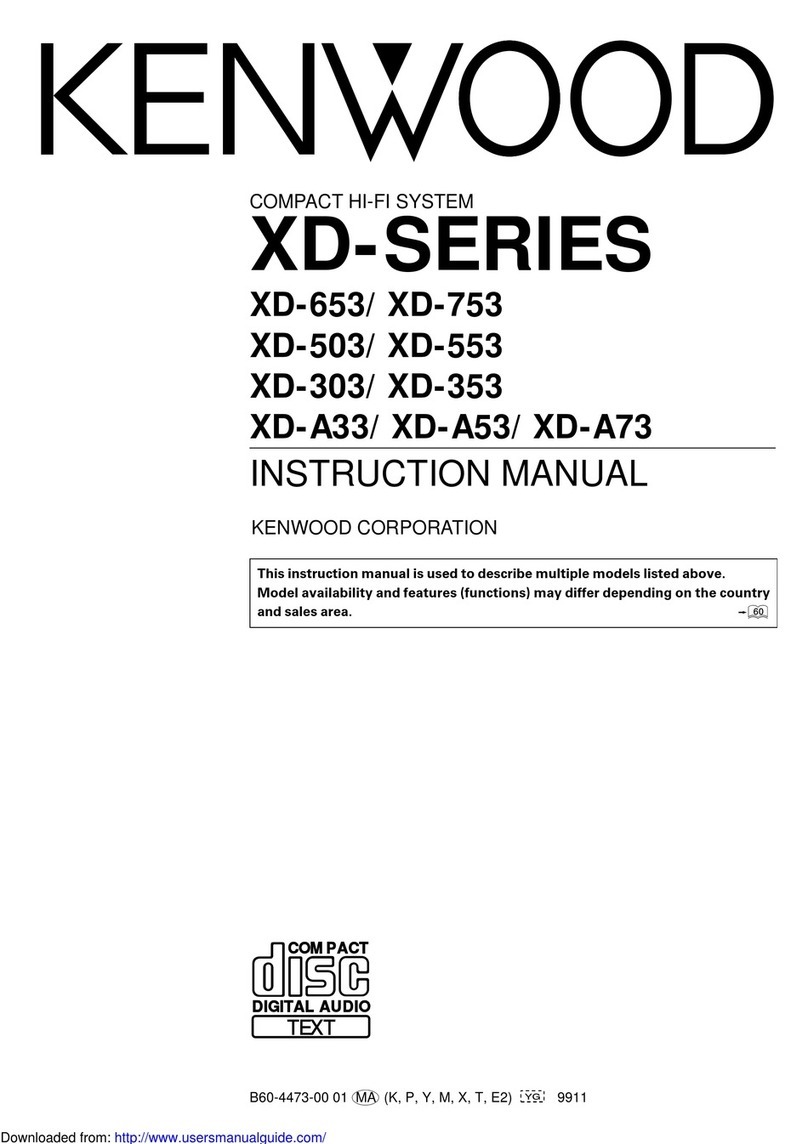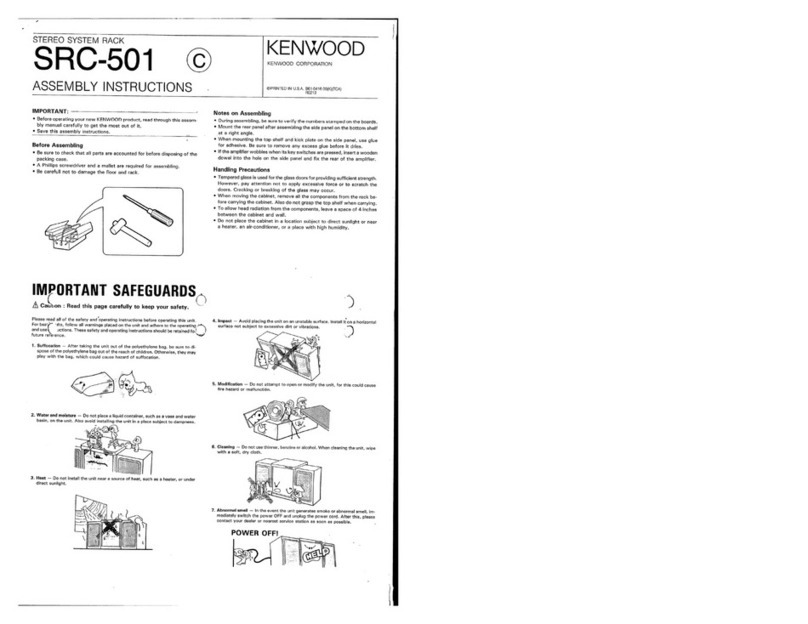
Do not use the unit on a bed, sofa, rug or
similar surface that may block the ventila-
tion openings. Thisunit should not be
placed in a built-in installation such asa
bookcase or rack unlessproper ventila-
tion isprovided or the manufacturer’s
instructionshave been adhered to.
5 W ater and moisture. The unit should
not be used near water. for example,
near a bathtub, washbowl, kitchen sink,
laundry tub, in a wet basement, or near a
swimming pool, etc.
6 Temperature. The unit may not func-
tion properly if used at extremely low, or
freezing temperatures. The ideal ambient
temperature is above +41ºF.
7 Heat. The unit should be situated away
from heat sources such asradiators, heat
registers, stoves, or other units(including
amplifiers) that produce heat.
8 Electric Shock. Care should be taken
so that objectsdo not fall and liquid is
not spilled into the enclosure through
openings. If a metal object, such asa hair
pin or a needle, comes into contact with
the inside of thisunit, a dangerouselectric
shock may result. For familieswith chil-
dren, never permit children to put
anything, especially metal, inside this unit.
9 Enclosure removal. Never remove
the enclosure. If the internal partsare
touched accidentally, a seriouselectric
shock might occur.
10 Cleaning. Unplug thisunit from the wall
outlet before cleaning. Do not use
volatile solvents such asalcohol, paint
thinner, gasoline, or benzine, etc. to clean
the cabinet. Use a clean dry cloth.
11 Lightning. For added protection for this
unit during a lightning storm, or when it is
left unattended and unused for long peri-
ods of time, unplug it from the wall outlet
and disconnect the antenna or cable
system. This will prevent damage to the
unit due to lightning and power-line
surges.
12 Abnormal smell. If an abnormal smell
or smoke is detected, immediately turn
the power O FF and unplug the unit from
the wall outlet. Contact your dealer or
nearest service center.
13 Damage requiring service. The unit
should be serviced by qualified service
personnel when:
The power-supply cord or the plug has
been damaged.
Objects have fallen, or liquid has been
spilled into the unit.
The unit has been exposed to rain or
water.
The unit has been dropped, or the enclo-
sure damaged.
The unit exhibits a marked change in
performance.
The unit does not appear to operate
normally by following the instruction
manual. Adjust only those controlsthat
are covered by the instruction manual as
an improper adjustment of other controls
may result in damage and will often
require extensive work by a qualified
technician to restore the unit to its
normal operation.
14 Servicing. The user should not attempt
to service the unit beyond that described
in the instruction manual. All other servic-
ing should be referred to qualified service
personnel.
15 Power lines. An outside antenna
system should not be located in the vicin-
ity of overhead power linesor other elec-
tric light or power circuits, or where it
can fall into such power linesor circuits.
W hen installingan outside antenna
system, extreme care should be taken to
keep from touching such power lines or
circuitsascontact with them might be
fatal.
16 AC outlets. Do not connect other
audio equipment with a power consump-
tion larger than that specified to the AC
outlet on the rear panel. Never connect
other electrical units, such asan iron or
toaster, to it to prevent fire or electric
shock.
17 Overloading. Do not overload wall
outlets, extension cords, or integral
convenience receptaclesasthis can result
in a risk of fire or electric shock.
18 Attachment. Do not use attachments
not recommended by the unit manufac-
turer asthey may cause hazards.
19 Replacement parts. W hen replace-
ment partsare required, be sure the
service technician has used replacement
partsspecified by the manufacturer or
have the same characteristics asthe origi-
nal parts. Unauthorized substitutionsmay
result in fire, electric shock, or other
hazards.
20 Safety check. Upon completion of any
service or repairsto this unit, ask the
service technician to perform safety
checksto determine that the unit isin
proper operating condition.
21 Cartsand stands. Don’t put thisunit
on a cart or stand that isunsteady or that
can not support the unit’sweight. If you
move thisunit on a cart or stand, be
careful—quick stops, excessive force and
pushing over or uneven surfaces, may
cause the cart to overturn and damage
your equipment.
FCC W arning
Thisequipment may generate or use radio
frequency energy. Changesor modifications
to thisequipment may cause harmful
interference unless the modificationsare
expressly approved in the instruction manual.
The user could lose the authority to operate
this equipment if an unauthorized change or
modification ismade.
Important
Thisequipment hasbeen tested and found to
comply with the limits for a ClassB digital
device, pursuant to Part 15 of the FCC Rules.
These limitsare designed to provide
reasonable protection against harmful
interference in a residential installation. This
equipment may cause harmful interference to
radio communicationsif it is not installed and
used in accordance with the instructions.
However, there isno guarantee that
interference will not occur in a particular
installation. If this equipment does cause
harmful interference to radio or television
reception, which can be determined by
turning the equipment O FF and O N, the user
isencouraged to try to correct the
interference by one or more of the following
measures:
•Reorient or relocate the receiving
antenna
•Increase the separation between the
equipment and receiver
•Connect the equipment into an outlet on
a circuit different from that to which the
receiver isconnected
•Consult the dealer or an experienced
radio/TV technician for help
Cable System Installer Notice
Article 820-40 of the NEC provides
guidelinesfor proper grounding and, in
particular, specifiesthat the cable ground shall
be connected to the grounding system of the
building, asclose to the point of cable entry
aspractical.
4.
Antenna
lead in wire
Antenna
discharge unit
(N EC section 810-20)
Grounding conductors
(N EC section 810-21)
Grounding
clamps
Grounding
clamp
Electrical service
equipment
Power service grounding
Electrode system
(NEC ART 250, part H)
Downloaded from: http://www.usersmanualguide.com/
